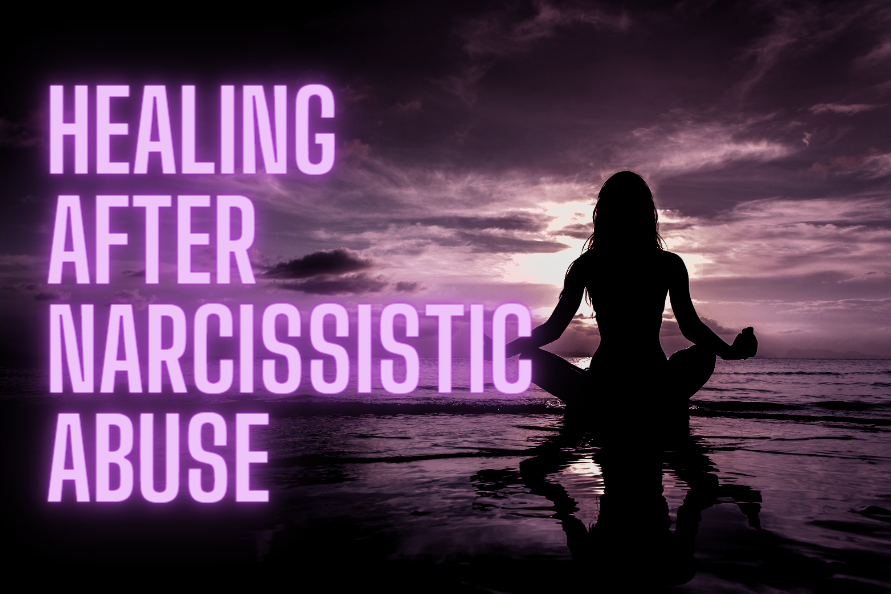Introduction
Narcissistic abuse is an insidious form of emotional manipulation and control that can leave deep and lasting wounds. Healing from narcissistic abuse can be a harrowing process. Yet, the very nature of this abuse often renders it invisible, clouded in a fog of confusion, self-doubt, and denial. Unlike physical violence, its scars aren’t always visible, but they cut deeply nonetheless. Society’s increasing awareness and understanding of this damaging pattern of behavior have brought forth the urgency to highlight effective strategies to heal from such experiences.
The impact of narcissistic abuse can range from a nagging sense of discomfort to profound emotional distress. Common symptoms include feelings of worthlessness, self-doubt, chronic anxiety, and a pervasive sense of guilt or shame. For many victims, the effects seep into every aspect of their lives, hindering their capacity to form healthy relationships, impairing their self-esteem, and even influencing their mental health.
Understanding Narcissistic Abuse
To begin the process of healing, it’s essential first to understand what narcissistic abuse entails. Narcissistic abuse refers to a form of psychological and emotional manipulation initiated by a person with narcissistic tendencies. It is important to note that narcissistic tendencies can exist to varying degrees, and not everyone with narcissistic traits will engage in abusive behavior.
Narcissists often resort to tactics like gaslighting, manipulation, and emotional blackmail to gain control and power over their victims. These behaviors are usually patterns that repeat over time, causing significant harm to the victim’s emotional well-being. Recognizing these patterns can be a critical first step in reclaiming your life from narcissistic abuse.
However, there’s a distinction to be made between narcissism and narcissistic abuse. Narcissism is a personality trait characterized by an inflated sense of self-importance and a deep need for excessive attention and admiration. In contrast, narcissistic abuse involves exploiting these traits to harm, manipulate, or control others.
In the following sections, we delve deeper into the effects of narcissistic abuse, how to identify the signs, and powerful techniques that can aid victims in their healing journey.
Effects of Narcissistic Abuse
The negative impacts of narcissistic abuse can be far-reaching, encompassing both physical and emotional aspects of an individual’s life. From a physical standpoint, chronic stress from enduring such abuse can lead to a variety of health issues including insomnia, anxiety disorders, and even cardiovascular problems.
The emotional toll, while not always visible, can be even more devastating. Victims often report a sense of diminished self-worth, feelings of anxiety and depression, and a constant state of confusion and self-doubt. This psychological damage can trigger coping mechanisms that further reinforce the cycle of abuse.
Moreover, narcissistic abuse can negatively affect a person’s self-perception. Victims often internalize the abuser’s devaluing messages, which can lead to feelings of inadequacy and worthlessness. This distortion of self-perception can perpetuate the cycle of abuse, as it can make the victim more susceptible to the abuser’s manipulative tactics.
Notably, narcissistic abuse can significantly impact a person’s social interactions and relationships. Fear of encountering similar abusive patterns can lead to social withdrawal or development of trust issues. Furthermore, a distorted sense of self-worth may make it challenging to form and maintain healthy relationships.
Recognizing the Signs of Narcissistic Abuse
To break free from the cycle of narcissistic abuse, recognizing the signs is the first critical step. The emotional and psychological signs can be subtle and often masked by the abuser’s manipulation tactics. These signs might include feelings of being constantly belittled, invalidated, and manipulated.
Behavior and lifestyle patterns can also serve as indicators of narcissistic abuse. For example, the victim might feel the need to constantly please the abuser, often at the expense of their own well-being. In addition, victims might find themselves walking on eggshells to avoid conflicts, or they may be isolated from their social circles.
Another important aspect in recognizing narcissistic abuse lies in identifying red flags in relationships. This could include a partner who constantly undermines or belittles their significant other, excessive control over the partner’s life, or a lack of empathy towards the partner’s feelings.
Up next, this article will outline powerful techniques that can aid in healing from narcissistic abuse. By utilizing these strategies, individuals can reclaim their life, regain their sense of self, and move towards a healthier future.
Techniques for Healing from Narcissistic Abuse
Beginning the journey of recovery from narcissistic abuse involves multiple steps, each of them crucial to regaining control over one’s life. The first and perhaps one of the most important steps is establishing boundaries. Victims of narcissistic abuse often struggle with boundary-setting due to the abuser’s consistent disregard for personal space and autonomy. However, learning to establish and maintain healthy boundaries can protect against future abuse and encourage personal growth.
It is equally vital to understand and acknowledge feelings that emerge in the aftermath of abuse. These emotions, though sometimes painful, are a natural response to a traumatic experience. Processing these feelings can provide a means of releasing stored tension and trauma.
In the same vein, self-care techniques can play a significant role in healing. This can include a balanced diet, regular exercise, sufficient sleep, and activities that promote relaxation and stress relief. Encouraging self-care can aid in replenishing the physical and emotional energy depleted by the abuse.
Seeking professional help, such as therapy or counseling, can provide a safe space to explore feelings, develop coping mechanisms, and build resilience. Therapists trained in dealing with narcissistic abuse can guide individuals through the healing process, providing tools and strategies tailored to their unique circumstances.
Building a support network is also crucial. Friends, family, or support groups can offer comfort, validation, and advice. Connecting with others who have similar experiences can provide a sense of community and shared understanding, fostering a healing environment.
Mindfulness and grounding techniques, such as meditation or yoga, can help victims regain a sense of control over their body and mind. These practices can aid in reducing anxiety, improving mental clarity, and fostering a stronger connection with the self.
Journaling and expressive writing can serve as powerful tools for healing. Writing about experiences and emotions can provide a therapeutic outlet, aiding in the process of making sense of the abuse and its impacts.
Art and creative therapies offer another medium for expressing feelings and experiences that may be difficult to put into words. Whether it’s painting, dancing, sculpting, or music, creative outlets can serve as potent healing tools.
Maintaining physical health and engaging in regular exercise can support overall well-being and provide a positive outlet for stress and negative emotions. It can also aid in rebuilding self-esteem and body confidence, which can often be eroded by narcissistic abuse.
Positive affirmations and self-talk can help to counter the negative self-perceptions that are often internalized during abuse. Regular practice of affirmations can foster a positive mindset and reinforce self-love and self-acceptance.
Limiting contact with the abuser, where possible, can be crucial in the healing process. This step can help to break the cycle of abuse and provide a much-needed space for healing and recovery.
Legal and financial independence can play a significant role in breaking free from narcissistic abuse. Gaining control over personal resources can provide a sense of autonomy and empowerment, making it easier to navigate away from the abusive situation.
Healing through nature and pets can provide comfort and a sense of peace. The therapeutic effect of nature and the unconditional love from pets can be soothing during the recovery process.
Learning to trust again is another important aspect of healing from narcissistic abuse. Rebuilding trust can be a challenging process, but it’s crucial for establishing healthy relationships post-abuse.
Techniques to reinforce self-identity, such as exploring personal interests and values, can help in re-establishing a sense of self, which often gets eroded in the face of narcissistic abuse.
Education about narcissistic abuse can empower victims and protect them from future abuse. Understanding the tactics and patterns of narcissists can provide insight and validation, aiding in the healing process.
Online support groups and communities can offer a platform to share experiences, gain insights, and receive support from individuals who have undergone similar experiences.
Forgiveness and letting go, though difficult, can be powerful tools in the healing process. This doesn’t mean condoning the abuse, but rather releasing the hold it has on one’s life.
A gratitude practice can help shift focus from the negative aspects of the past towards the positive elements present in life. This practice can support emotional healing and foster a positive outlook on life.
Lastly, focusing on personal growth and self-improvement can aid in the recovery process. Embracing new hobbies, learning new skills, or pursuing personal goals can contribute to rebuilding self-esteem and identity.
Moving On: Life After Narcissistic Abuse
Emerging from the shadows of narcissistic abuse often demands significant resilience and courage. Yet, it can also open the door to a life of newfound freedom, autonomy, and personal growth. Reinventing life post-abuse is a journey that involves rebuilding damaged or lost relationships, nurturing a healthier self-image, and redefining personal identity apart from the influence of the abuser.
An integral part of this process involves the rebuilding of relationships. The isolating nature of narcissistic abuse often results in severed ties or strained relationships with friends and family. Reconnecting with these social networks can provide an essential support system and a sense of belonging. Furthermore, learning from past experiences can guide the formation of new, healthier relationships.
Pursuing a fulfilling life post-abuse also involves a focus on personal growth and self-improvement. This could encompass acquiring new skills, fostering personal interests, or setting and achieving personal goals. Such pursuits not only serve as a distraction from past trauma but can also contribute to the strengthening of personal identity and self-esteem.
Navigating life after narcissistic abuse may pose its own set of challenges, as the scars of past trauma can sometimes surface in unexpected ways. However, with continued application of the healing techniques discussed earlier, such obstacles can be effectively managed.
Conclusion
Navigating the journey from experiencing narcissistic abuse to reclaiming control and moving on in life is a challenging process. However, the resilience demonstrated by survivors is a testament to the human spirit’s capacity to heal and flourish, even in the aftermath of such adversity.
It is important to remember that everyone’s healing journey is unique. The timeline, the path taken, and the techniques used might vary, but the underlying goal remains the same – to reclaim life after narcissistic abuse and move towards a healthier, happier future.
For further assistance on this journey, various resources, support networks, and professional help can provide invaluable guidance and support. Remember, healing is not just possible; it’s a testament to the indomitable strength that resides within each survivor.





